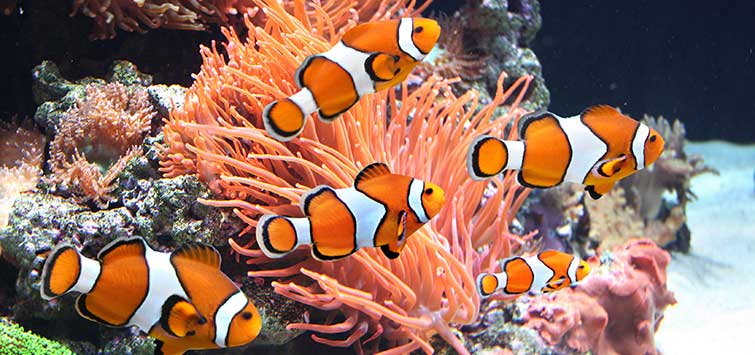Rocks are a popular addition to fish tank as they provide a natural and visually appealing environment for aquatic inhabitants. They can serve as hiding spots, platforms for plants, and even contribute to the overall water chemistry. In this article, we will explore different types of rocks commonly used in fish tanks, their unique characteristics, and considerations for their safe and effective use. We will also highlight some of the best rocks for aquariums.
Basalt Rocks
Basalt rocks are igneous rocks that have a dark-colored, fine-grained texture. They are commonly used in aquariums due to their neutral pH and ability to mimic natural underwater landscapes. Some key features of basalt rocks include:
- Durability: Basalt rocks are known for their hardness and durability, making them suitable for both freshwater and saltwater aquariums.
- Aesthetics: The dark, earthy tones of basalt rocks create a stunning contrast against vibrant plants and fish, adding depth and a natural look to the aquarium.
Limestone Rocks
Limestone rocks are sedimentary rocks composed primarily of calcium carbonate. They can have varying textures and colors, including white, gray, and even earthy shades. Here are some characteristics of limestone rocks in fish tanks:
- Alkaline Nature: Limestone rocks have the potential to increase the pH and hardness of the water, making them suitable for fish species that thrive in alkaline conditions, such as cichlids.
- Cave-Like Structures: Limestone rocks often have unique formations and crevices, creating natural caves or hiding spots for fish to explore and seek shelter.
Slate Rocks
Slate rocks are metamorphic rocks that display distinctive layers or foliation. They are commonly used in aquariums for their aesthetic appeal and functional properties. Consider the following aspects of slate rocks:
- Color and Texture: Slate rocks come in various shades of gray, black, and even purple, adding visual interest to the aquarium. Their smooth texture makes them fish-friendly, preventing injuries from rough surfaces.
- Natural Staircase Effect: Due to their layered structure, slate rocks can be stacked or arranged to create natural terraces or steps, providing elevation and different levels for fish and plants.
Quartz Rocks
Quartz rocks are sedimentary or metamorphic rocks composed mainly of quartz mineral. They are prized in aquariums for their sparkly appearance and ability to refract light. Here are some features of quartz rocks in fish tank:
- Visual Appeal: Quartz rocks often contain crystals or quartz veins, giving them a captivating shimmer and enhancing the overall aesthetics of the aquarium.
- Compatibility: Quartz rocks are chemically inert, meaning they do not significantly impact the water chemistry. They are safe to use in various types of aquarium setups.
Best Rocks for Aquariums
In addition to the rocks mentioned above, there are a few other rocks that are widely regarded as excellent choices for aquariums:
- Dragon Stone (Ohko Stone): Dragon Stone is a type of rock with a unique texture and appearance, featuring intricate and rugged shapes. It is highly sought after for creating dramatic and visually striking aquascapes.
- Texas Holey Rock: Texas Holey Rock is a porous limestone rock with holes and crevices, providing natural hiding spots for fish. It also helps in raising the pH and hardness of the water, making it suitable for African cichlids.
When selecting rocks for your aquarium, it’s important to consider their safety, compatibility with your fish species, and their impact on water chemistry. Avoid using rocks that may leach harmful substances into the water or adversely affect the pH and hardness levels. It’s recommended to source rocks specifically sold for aquarium use to ensure their suitability.
Remember to clean the rocks thoroughly before adding them to the aquarium to remove any debris or contaminants. Proper placement and stability of rocks are crucial to prevent accidents or damage to the aquarium and its inhabitants.
Conclusion
The inclusion of rocks in a fish tank can create a visually stunning and natural-looking environment for your aquatic pets. Whether you opt for basalt, limestone, slate, quartz, Dragon Stone, or Texas Holey Rock, make sure to select rocks that are safe for aquarium use and compatible with your specific fish species. With careful consideration and proper maintenance, the rocks in your aquarium will contribute to the beauty and functionality of your underwater ecosystem.





